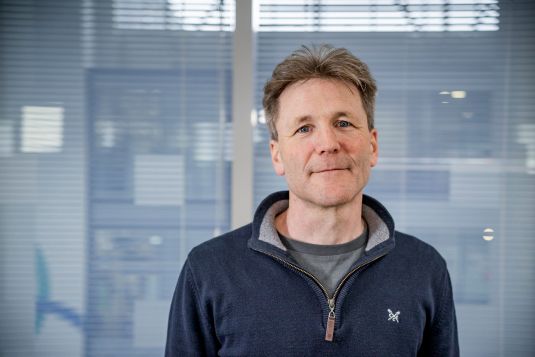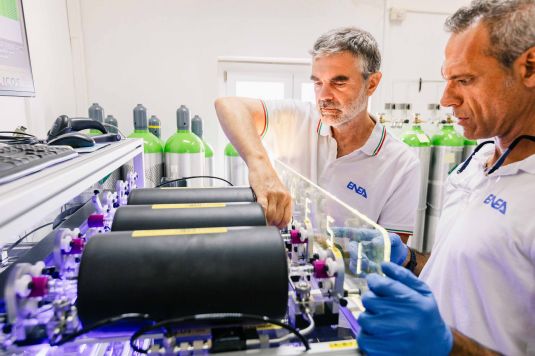 Home - Carbon Asset Data Service - Applications - MRV: A critical tool for tracking climate action progress
Home - Carbon Asset Data Service - Applications - MRV: A critical tool for tracking climate action progress The world needs to drastically reduce its greenhouse gas emissions to avoid the worst impacts of climate change. But how can we confidently measure the effectiveness of our efforts? Monitoring, Reporting and Verification (MRV) systems could provide the answer.
Countries need to monitor, report and verify what they are doing individually and collectively to reduce greenhouse gas emissions. At its core, an MRV system is designed to do just that, supporting policy and actions to mitigate climate change.
WHO BENEFITS FROM MONITORING, REPORTING AND VERIFICATION OF CARBON EMISSIONS?
Despite its origins, the term ‘MRV’ is not limited to the realm of national inventories. Robust, observation-based MRV systems benefit decision makers on the local to global scale:
Local and regional level: Cities and regions often have climate action plans in place as well as established MRV frameworks to track progress, assess their climate actions and report on their carbon reduction targets. MRV systems, particularly observation-based MRV systems located in urban areas, have the potential to support and complement other existing frameworks.
Businesses: Companies need to show their stakeholders verified data on their efforts to reduce emissions or their measures to remove carbon dioxide from the atmosphere. They also use data to participate in emission trading systems or carbon markets.
National governments: Observation-based MRV systems can help countries track their progress on a variety of climate mitigation plans and policies, such as carbon farming systems.
The European Union: The EU has ambitious emissions reductions targets – a recent, non-binding proposal by the European Commission could see the region aim to cut net emissions by 90% by 2040 compared to 1990 levels. These sorts of targets cannot be achieved without effective ‘follow-up’ systems. MRV systems make it easier to track progress.
Globally: The Global Stocktake, a United Nations-led process in which countries and stakeholders assess collective progress towards meeting the Paris Agreement goals, requires methods beyond the national inventories.
HOW CAN OBSERVATIONAL DATA PLAY A PART IN MRV?
Observations are direct measurements of the concentration of greenhouse gases in the atmosphere at a certain moment, most commonly carbon dioxide and methane.
Using observational data in MRV systems is beneficial because the combination of information from ground-based networks and satellites provides a pattern of greenhouse gas concentrations over space and time. That data contains valuable information about gas exchanges (fluxes) between land, oceans and the atmosphere.
Analysing these patterns provides important knowledge on fossil fuel emissions and more. “For me, MRV is a capacity to make use of atmospheric observations - this would be the monitoring part,” explains Dr Marko Scholze, Senior Lecturer at the Department of Physical Geography and Ecosystem Science at Lund University.
“In a nutshell, MRV allows you to see if you can reconcile whatever you estimate from models using atmospheric records (data) with reported emissions (inventories).”
Observation-based MRV systems are not designed with the intent of replacing inventories. Instead, they have the potential to improve inventories. One example of observations-based MRV enhancing national reporting comes from the United Kingdom.
“For the last two decades, the Met Office has been developing the Inversion Technique for Emission Modelling,” says Professor Alistair Manning at the University of Bristol and the UK Met Office.

Observation-based MRV systems have the potential to improve inventories, says Professor Alistair Manning. Photo by Met Office
“Our measurements showed that hydrofluorocarbons – powerful greenhouse gases found in refrigerators and air conditioners that replaced ozone-depleting gases like chlorofluorocarbons (CFCs) - declined much more sharply than the UK's inventory reported for the same period. This finding prompted questions about the UK’s inventories’ counting methodologies,” says Manning and continues:
“Are we counting something incorrectly? Do we need to invest in a better understanding of the hydroflurocarbons emissions from a certain sector?” In other words, this observation data prompted the UK government to reassess elements of their inventory methodologies, thereby strengthening their annual reporting to the UNFCCC.
“MRVs are simply another tool to improve a country’s inventories – not to replace them!” adds Manning.

Giorgio Alcide di Sarra and Damiano Sferlazzo installing the new flask sampler at the Italian Lampedusa atmosphere monitoring station in the ICOS network. The flask sampler is used to collect air samples and calibrate equipment at certain ICOS stations, while also detecting fossil fuels in the CO2 measured. This way, scientists can distinguish the origin of the CO2.
Photo: Pekka Pelkonen, ICOS RI
CHALLENGES OF ESTABLISHING MRV SYSTEMSMRV
MRV systems are not simple to set up and maintain, particularly from a global perspective. There are challenges which need to be addressed, such as establishing models, resolving regional gaps in data provision and ensuring MRV systems are supported by proper infrastructure and funding.
Understanding the function and longevity of an MRV system is one hurdle. “An MRV system requires research to function, but it should not be run as a research project. An MRV can’t be run on, say, a five- year research grant and then be over. It requires operational staff to support and maintain it long-term,” explains Scholze.
There are also methodological questions to solve when setting up MRV systems.
“When we measure atmospheric concentrations, either by using ground-based or satellite observations we need a model that links these concentration measurements to emissions and natural fluxes at the surface. Then we need additional models for the ocean and terrestrial carbon cycle, and for various kinds of human-induced emissions on land, such as those caused by land use or by burning fossil fuels, for example,” says Scholze.
Alongside this, directly measuring all types of emissions is a hard task to accomplish, says Dr Richard Engelen, Deputy Director of the Copernicus Atmosphere Monitoring Service (CAMS) at the European Centre for Medium-Range Weather Forecasts (ECMWF).
“While we might be able to make direct observations from point sources, such as factories or heating facilities, this becomes much more difficult when trying to measure emissions from cars, for instance,” he explains.
Running long-term MRV systems that incorporate observations requires high technological knowledge of the personnel. MRV systems also require financial support. In Europe, the EU funds several MRV projects which are moving towards becoming operational systems. Financial support is essential to purchase the supercomputers required for computation, data handling and storing many terabytes of data.
When incorporating observations into a global MRV system, these challenges take on a new dimension. Some parts of the world, such as Europe and North America, have well-developed ground-based observation networks and the people to operate them but even these have gaps in their coverage.
Meanwhile, some regions would need to find ways to develop networks. This is not just in terms of physical installations but also concerns the development of data pipelines and modelling systems with well-trained personnel.
In spite of these challenges, the number of independent observation-based MRV projects has grown in recent years. Initiatives like the Global Greenhouse Gas Watch benefit from the significant strides that have been taken already towards establishing observation-based MRV systems.

Kyriaki Papoutsidaki is checking samples from the ICOS Finokalia station in the university laboratory in Crete, Greece. Running MRV systems based on observations requires high technological knowledge of the personnel. Photo: Pekka Pelkonen, ICOS RI.
SOURSE:
https://www.icos-cp.eu/fluxes/3/mrv-critical-tool-tracking-climate-action-progress
 Tel:+86-400 961 6990 Email:info@healthyphoton.com
Add:Room 305, Building 1, Zhongchuang Science Park, Jinyuan Road, Panhuo Street, Yinzhou District, Ningbo City,China
Tel:+86-400 961 6990 Email:info@healthyphoton.com
Add:Room 305, Building 1, Zhongchuang Science Park, Jinyuan Road, Panhuo Street, Yinzhou District, Ningbo City,China


